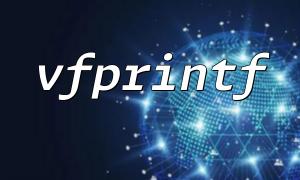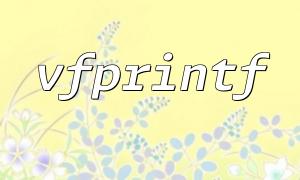In PHP, vfprintf and sprintf are important functions for string formatting, but their usage scenarios are slightly different. Reasonably combining the two can achieve more flexible data preprocessing and formatted output. This article will introduce their basic usage and show how to use these two functions in combination to improve the readability and maintainability of your code.
sprintf is used to return the formatted string and will not be output directly to the screen. For example:
<code> $name = "Alice"; $message = sprintf("Hello, %s!", $name); echo $message; // Output: Hello, Alice! </code>sprintf is very suitable for preprocessing data and generating strings in the required format for easy subsequent use.
vfprintf functions similar to fprintf , but it accepts an array as a parameter list. This allows us to centrally process the variables and then pass them in uniform:
<code> $file = fopen("log.txt", "w"); $format = "User %s accessed %s on %s\n"; $data = ["Alice", "https://gitbox.net/dashboard", date("Ymd")]; vfprintf($file, $format, $data); fclose($file); // Write to log.txt: User Alice accessed https://gitbox.net/dashboard on 2025-05-26 </code>vfprintf is especially suitable for use in logging or file writing scenarios.
Sometimes we want to format the data first (such as formatting the date, string processing or data replacement), and then output or write to the file uniformly. At this time, we can use sprintf to preprocess the data, and then pass the processed data into vfprintf as an array.
Suppose we want to record user access logs, the log format is:
[time] user xxx Visited yyy,The status code is zzz
The code is as follows:
<code> function log_access($fileHandle, $username, $url, $statusCode) { // Step 1: Preprocess the data $timestamp = date("Ymd H:i:s"); $formattedUrl = sprintf("https://gitbox.net/%s", trim($url, "/")); // Step 2:Pass the formatted data into vfprintf
$format = "[%s] user %s Visited %s,The status code is %d\n";
$data = [$timestamp, $username, $formattedUrl, $statusCode];
vfprintf($fileHandle, $format, $data);
}
// Use example
$logFile = fopen("access.log", "a");
log_access($logFile, "alice", "dashboard", 200);
fclose($logFile);
</code>
Output (in access.log):
[2025-05-26 14:22:10] user alice Visited https://gitbox.net/dashboard,The status code is 200
Clear data flow : The preprocessing logic is concentrated inside the function, and the code structure is clearer.
Enhanced maintainability : When modifying the format or adding data fields, just adjust the sprintf and the data array.
High flexibility : It can be used in multiple scenarios such as logs, report generation, message templates, etc.
Using sprintf with vfprintf can not only achieve flexible data preprocessing and formatting output, but also make the structure of PHP programs clearer. This pattern is very practical especially in scenarios where format strings need to be dynamically assembled or output to files.
In daily development, rationally utilizing the advantages of these two functions can not only improve the quality of the code, but also reduce duplicate labor and provide convenience for maintaining large-scale projects.






